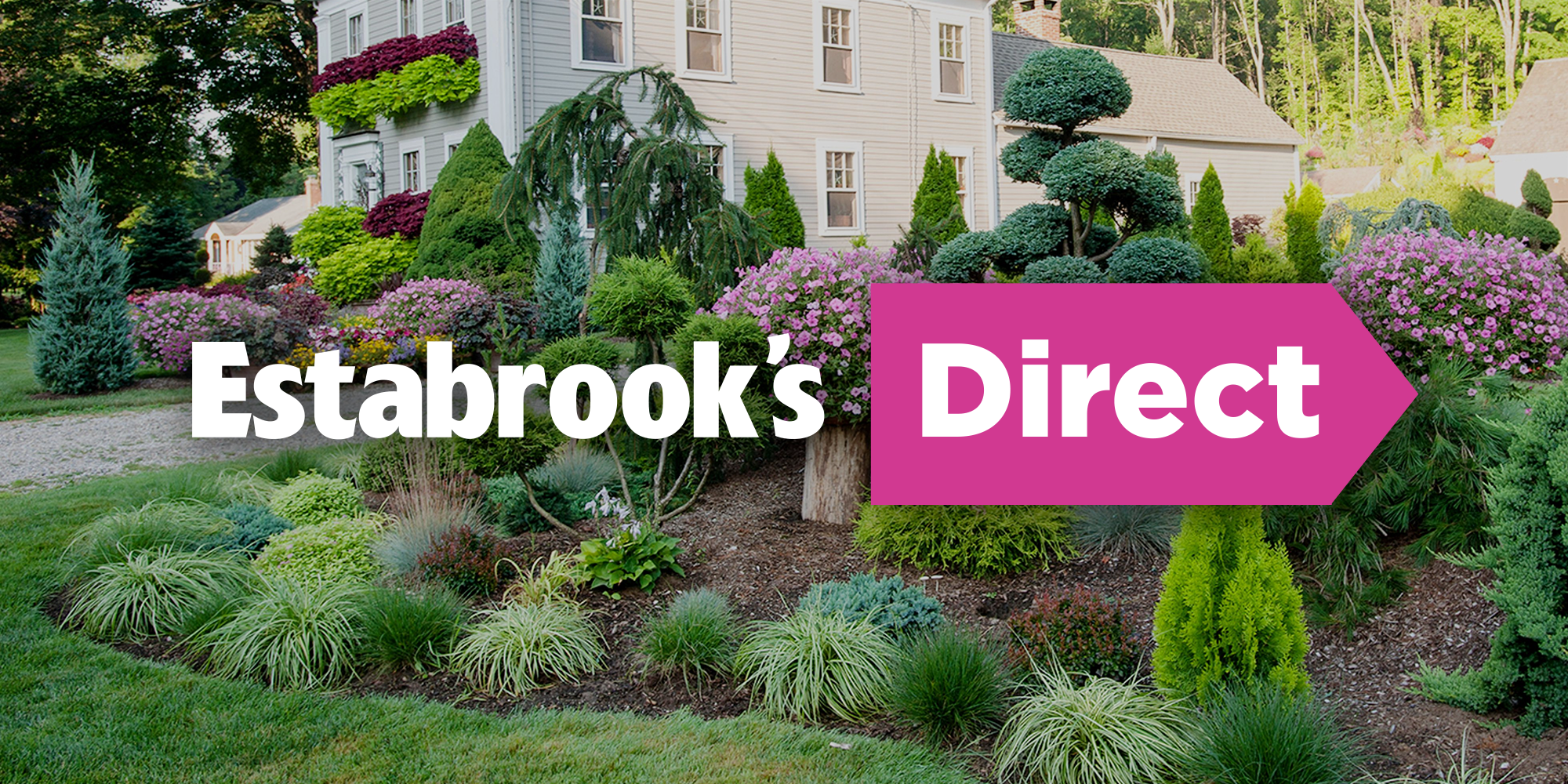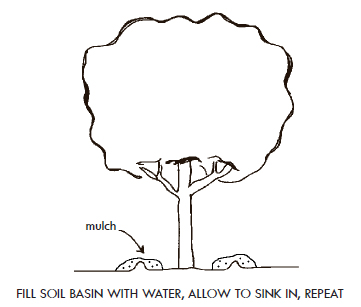
Estabrook's Direct
New Plant Care Instructions
Trees & Shrubs
The best time to plant trees and shrubs is in the spring and fall. The weather is cool, making it easier for plants to establish their roots and the watering requirements are far less than in the summer. Follow these simple instructions to get your plants off to a great start.
- Dig a hole almost as deep as the plant's root system and twice as wide while loosening the soil surrounding the hole.
- Set the plant in the hole so that the root ball sits 2" higher than the existing grade. If the plant is pot bound, score the roots with a sharp blade or knife. Do not remove the burlap from the root ball unless the burlap is non-biodegradeable.
- Untie the string around the top of the root ball and remove any plastic strings completely. Do not remove the wire basket.
- Amend the existing soil dug from the hole with peat moss, cow manure or compost. Add one shovel full of soil amending material to three shovel fulls of existing soil.
- Firm the soil around the base of the plant with your hands.
- Make a shallow water basin 3-4" deep using soil or mulch. The basin diameter needs to be approximately 1 1/2 times the root ball size.
- Fill the basin with water 2-3 times, saturating the root system. Continue to water on a regular basis using this method. For a guideline on amounts, please refer to the Watering Guide below.
- Make sure to apply a root stimulant. If you have questions, please ask our staff about the fertilizer requirements for your particular plant.
- Complete your planting by mulching with a 1-2" layer of bark or other material to help maintain moisture. Make sure to keep your mulch 2-3" away from the trunk or stems of your plant.


Tree & Shrub Watering Guide
Requirements will vary depending upon soil and weather conditions, but plants should not be allowed to dry out or sit in standing water.
| Size of Container | Amount of Water to Apply |
|---|---|
| 1 Gallon | 1 Gallon |
| 2 Gallon | 3 Gallons |
| 3 Gallon | 5 Gallons |
Appropriate watering is critical to the health and survival of your plant. Plants act like an umbrella, shedding water away from the root. Water even when it rains!
Perennials
The diverse number of blooms and foliage that perennials offer have made these plants favorites of gardeners all over the world.
We recommend the following planting guidelines:
- Choose the right number of plants for the area to be planted. This information can usually be found on the back of the plant tag, in our online catalog or by asking one of our knowledgeable staff members for help.
- Pull back any bark mulch. Since most perennials enjoy a richer soil, Estabrook's recommends that a well balanced organic fertilizer and the addition of a 2-4" layer of compost, composted cow manure or other soil amendment is incorporated into the soil to a depth of 14-18" every time perennials are added to new areas or existing plantings. Level off the planting area after working in the soil amendment.
- Make sure your plants are well watered, then dig a hole wider but not deeper than the root ball. Remove the plant from it's pot and if necessary, loosen its roots by gently fingering the bottom of the root ball or by scoring the sides of the root ball with a garden knife.
- Insert your plant into the hole and backfill with soil while firming down well and making sure the plant remains level with the sides of the hole. Estabrook's recommends the addition of a 1" "dam" of soil built 6-8" from the crown of the plant to form a "dish" that helps retain water.
- Mulch the planting with a 3-4" layer of bark mulch or 1-2" layer of buckwheat hull mulch and water thoroughly.
- Check for dryness daily for the first two weeks and water when needed until established. All plants appreciate extra water in periods of drought.
By following these instructions, your perennials will be off to a great start and can be enjoyed for many years to come.